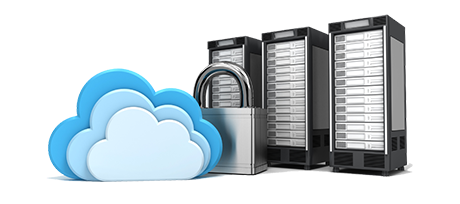


Server Racks are Just Steel Racks? IoT Rack is Coming
Server racks, the long existed infrastructure are necessary for every data center. However, why do data centers need the racks? What's the fundamental reason that racks are needed? Personally, I think it's a tool for managing the servers easily and efficiently. With racks, we are able to rise density of data center, standardize the installation of devices, make a organized and simple environment for operators.
But data center is prospering like never before. With the growth in cloud, big data and colocation, data center management are becoming more challenging too. The frequency operation and big server amount cause increasing complexity in management. Counting on human solely is not feasible for big data center anymore, we need other managing tools. Some platform like DCIM and CMDB are making the management easier, but seems that's not enough, the data collection is still counted on operators, which means the errors are inevitable. Due to the inevitable error in management, for example, the wrong record in device movement, the inaccuracy in power data, unknown running status and environment parameter and so forth. To automate the data collection will be the next step for unmanned and automated data center, some companies are working on it now. Servers' physical existence and position can be detected by IoT server rack now, some air conditioner and power supply module are adding the data port, together with the agent in servers to monitor the running status, the sound managing solution will be workable for big data centers.
The most surprising part of the whole solution is surely the IoT server rack, if you manage tens of thousands servers, you probably knew this idea before. For data center operators, servers' lifecycle management is a big task, although they could rely on the auto-notification from DCIM, but when they make any add/remove/change to the device, the position of each server still have to be recorded by the operator, who never wanted any mistake but always made it without awareness. How the IoT racks help in this? The position recording will be done by the rack automatically, without any manual recording, and the data goes to your database via TCP/IP. You don't have to do the complex recording anymore and will not miss any server even hundreds of changes happen in your data center everyday.
As the fast growth of data center, the traditional managing method will be outdated, and as the managing tool, traditional server rack is not enough for future data center operation. What people need is a more efficient and effective tool, with the capability to identify and positioning the server, IoT server rack is going to play that role in the future.

|
|
||
Comparison of U-position-level Data Center Assets Management Product |
||
|
Automated data center assets management system is a hot market recently, there are only several companies have the product for U-position-level data center assets management. These companies include Digitalor, company R, company M, Company xB and Company WH. How to choose between these products? Now let’s analyze them from the perspective of reliability and lifecycle cost. You could also download the detailed Comparison Matrix from our website. Company R is the first company developed the U-position-level data center assets management system, its product(Pic. 1) read the server information via the electric connection between the AMS and AMT. Operation staff can plug the AMT to the corresponding AMS, then the AMS will send the location information to the database. However, the electric connector has inherent problem. Plugging action will slowly damage the connector, lead to unstable connection, besides, the connector could be damaged by static electricity and oxidation. These problems determined the durability of the product is below user’s expectation. The lifespan of a data center is usually over 10 years, so users want the durability to reach 10 years. Company xB’s product(Pic. 2) is very similar to company R’s, the major difference is the connector only, company R’s connector is like a snap button, while company xB’s is like a USB connector. They have the same problem, so skip the repeated content here. |
||
| Conclusion: High OpEx. | ||
 |
 |
|
| Pic 1. Company R's product | Pic 2. Company xB’s product | |
|
Then let’s talk about company M’s product(Pic. 3), it adopts the traditional RFID technology, each server will be attached with a RFID tag, then use the RFID reader at each U position to read the tag, so which U position the server is at will be known according to the unique ID of the RFID reader. This solution’s critical problem is bad reliability. The RF signal will interfere each other, especially when being near, and the RF antenna will consume itself slowly, the effective reading range will change accordingly, it’s extremely complex to adjust every antenna and every tag during the lifecycle. Because of the high cost for adjustment, and bad stability, this solution cannot be deployed in big scale. Company WH’s product(Pic. 4) is similar to Company M's, so no more repeat here. |
||
| Conclusion: High OpEx, low reliability. | ||
 |
 |
|
| Pic 3. Company M’s product | Pic 4. Company WH’s product | |
|
Until 2015, Digitalor learned the experience of other companies in this industry, invented MC-RFID technology, it solved all the problems others met. MC-RFID is not the same as traditional RFID, it’s of triggered working mode. It works only when there is assets change happens, so the RF interference and antenna consumption are resolved. MC-RFID is not electric connection, so do not have the problem of connector maintenance. The durability of Digitalor’s product(Pic. 5) is over 10 years. |
||
| Conclusion: Low OpEx, high reliability. | ||
|
|
||
|
Pic 5. Digitalor’s product |
||
|
After Digitalor’s product went to the market, many data center experts for companies like Schneider-electric (APC), Emerson Network Power, IBM, ZTE did in-depth research of Digitalor’s product. They all express the appreciation for this new technology, and most of them start using or integrating it in their solutions. |
||

Why DCIM is Not Effective Sometimes
DCIM is a great tool designed for data center management, but some big clients are complaining that DCIM is not effective for them. Why? Because operation is more complex than what it is described in DCIM software, a comment from data center operator.
DCIM can only be effective with accurate data source. DCIM software could have the sound strategy plan and operation instructions, but all these are based on the effective data source, like the data of power consumption and efficiency of each server, which rack unit is the server at, and etc. These data come from a readable meter, with which the DCIM software should work together. Especially in giant data centers, the complexity increases exponentially with the escalation. It's not feasible to get all these information on-site. So DCIM is not all for operation, reliable data source and feasibility will be another key point.
How to guarantee the accuracy of the data source? The trend is using automated and readable meters, including power meter of each device for power management, the physical position tracking system of each server for lifecycle management, and so forth...
In the past, the recommended lifecycle management is not feasible in giant data centers. Simply because the tracking information of each server is done by human, mistake is often and inevitable. But now, there are some solutions for automated assets tracking. The best physical position tracking system for data center is merging now, the MCRF technology is a talented solution for data center assets tracking, it's the most durable, accurate and economic solution.
As the cloud and big data industry grows, the close-loop DCIM solution is going to be a must-have tool for giant data centers.

